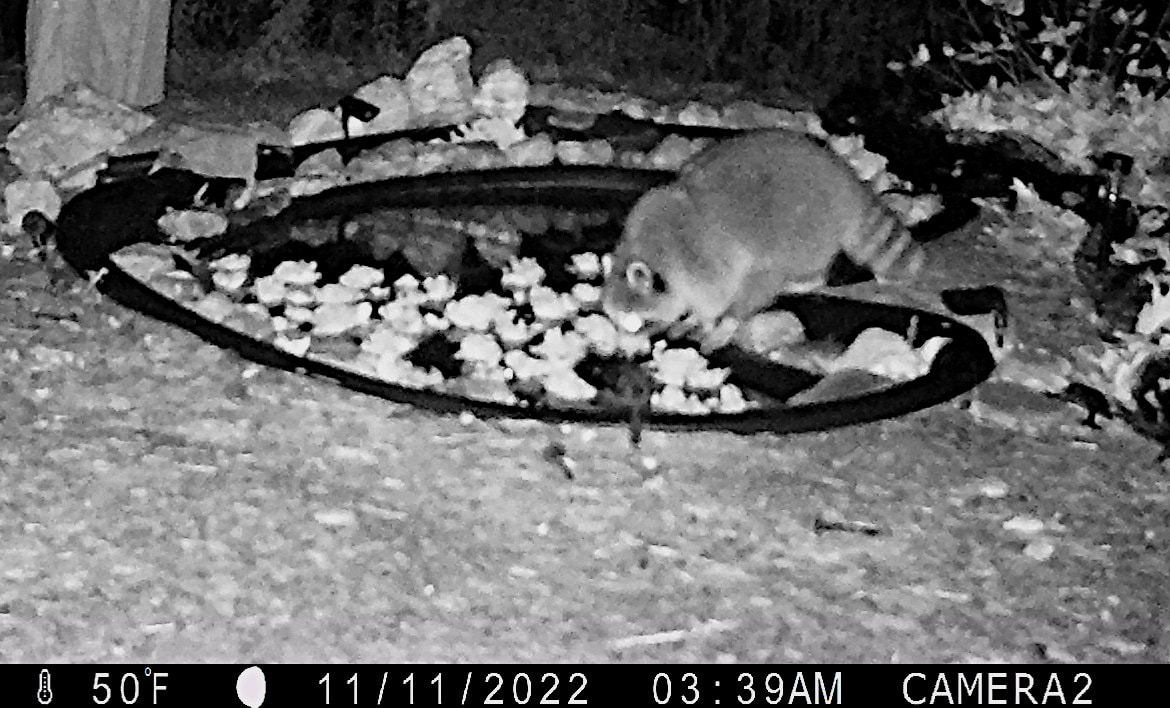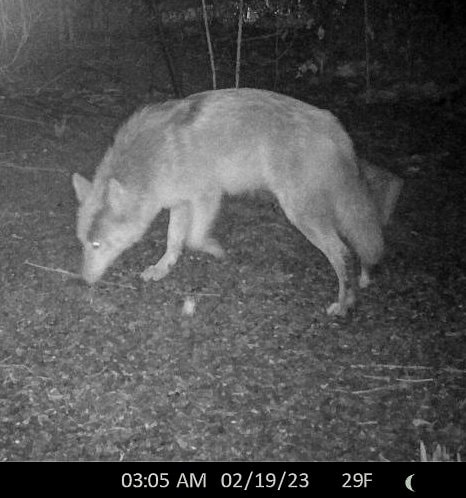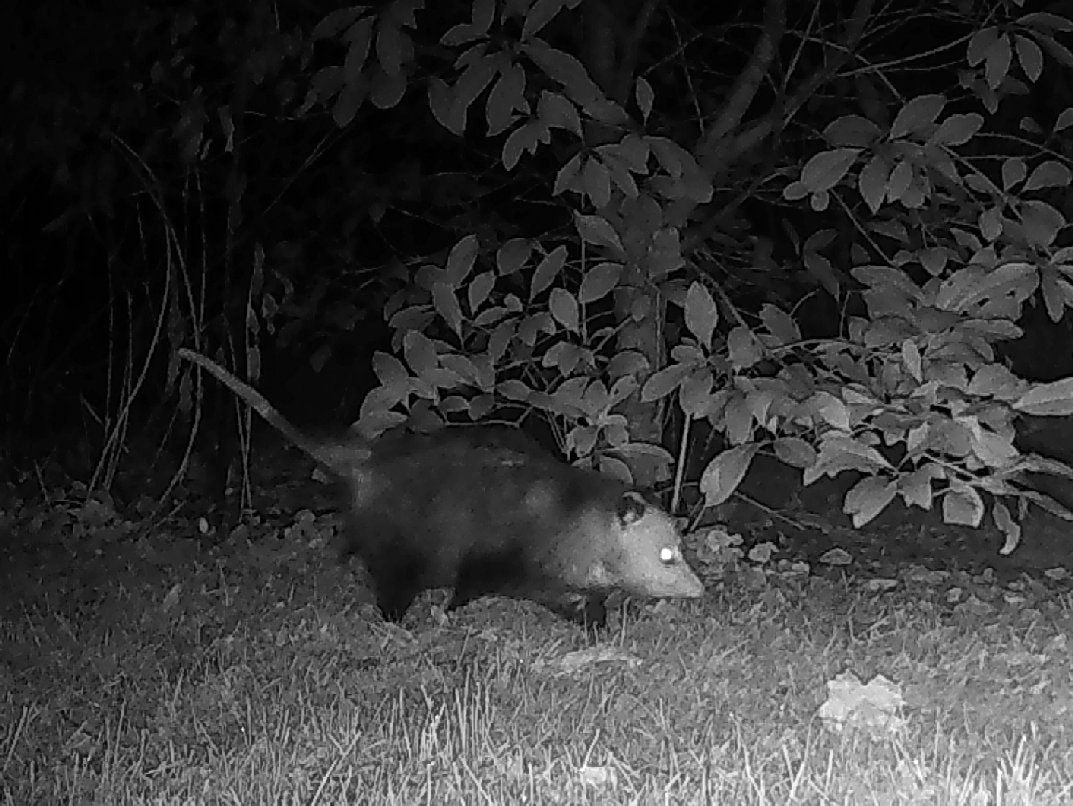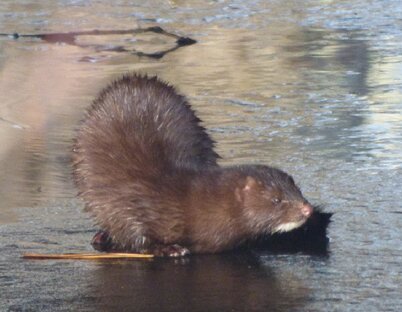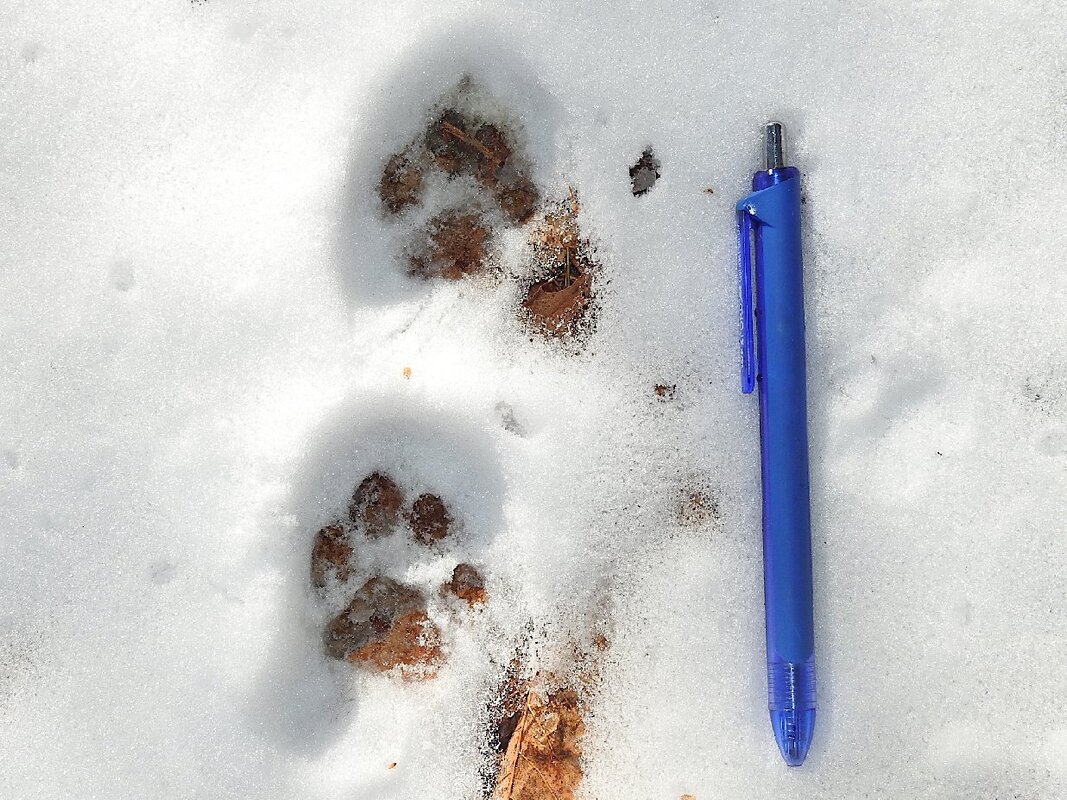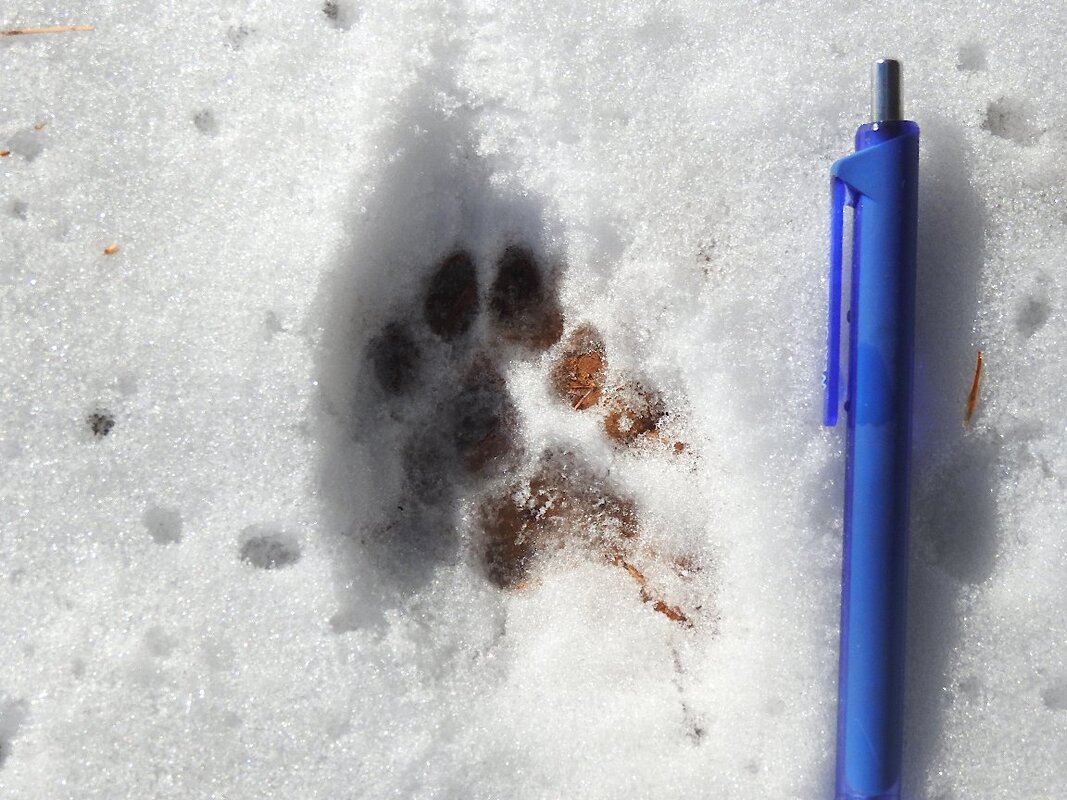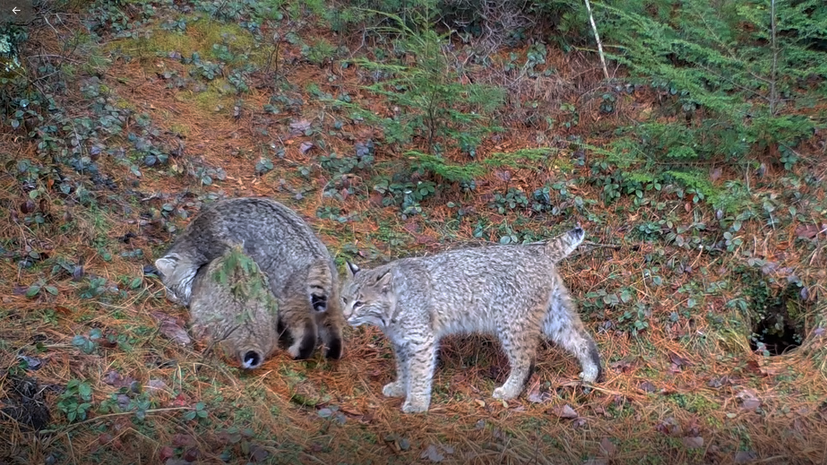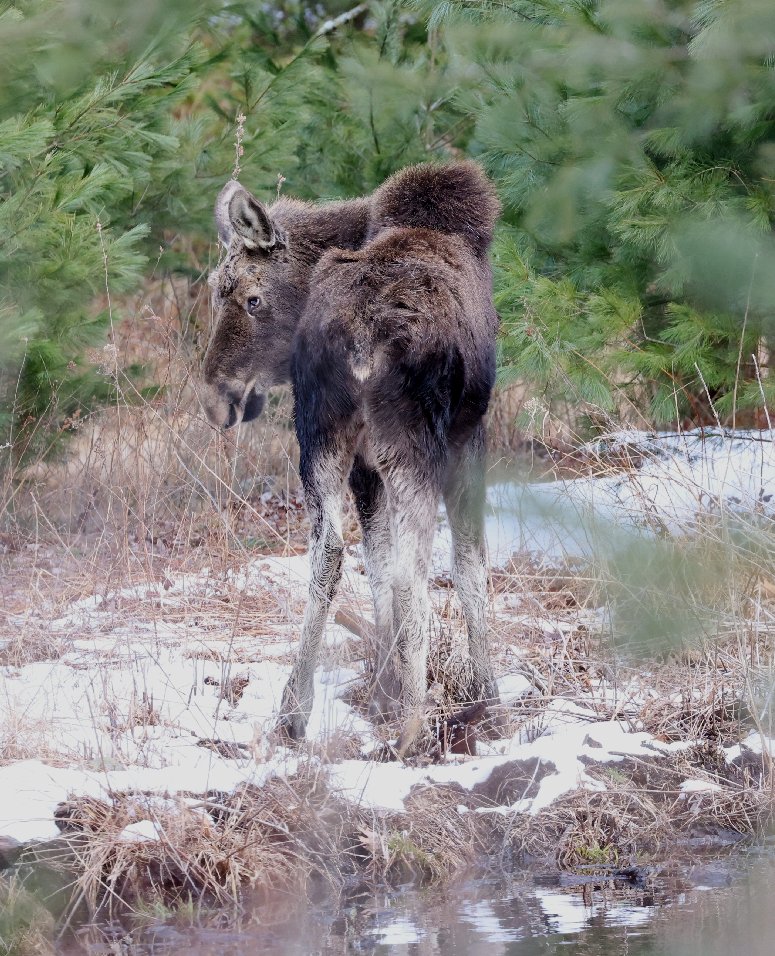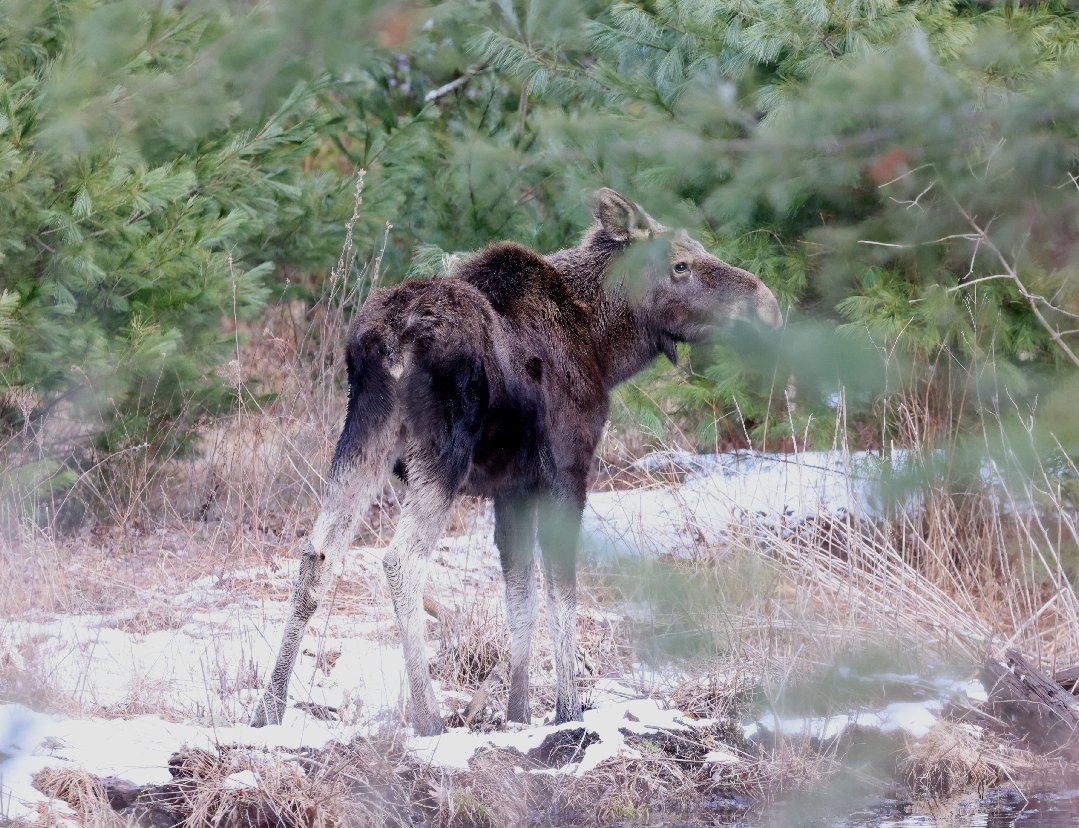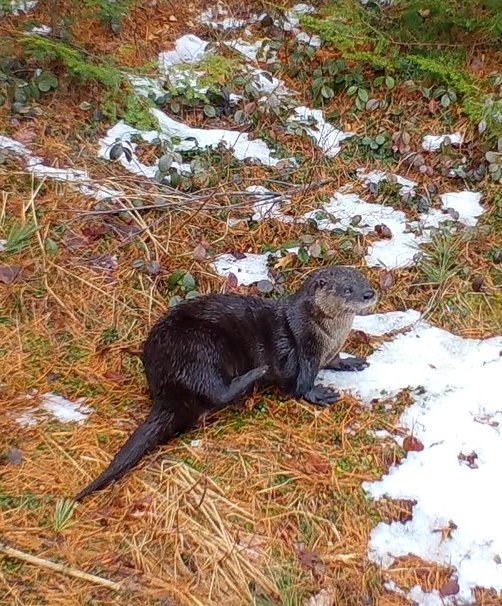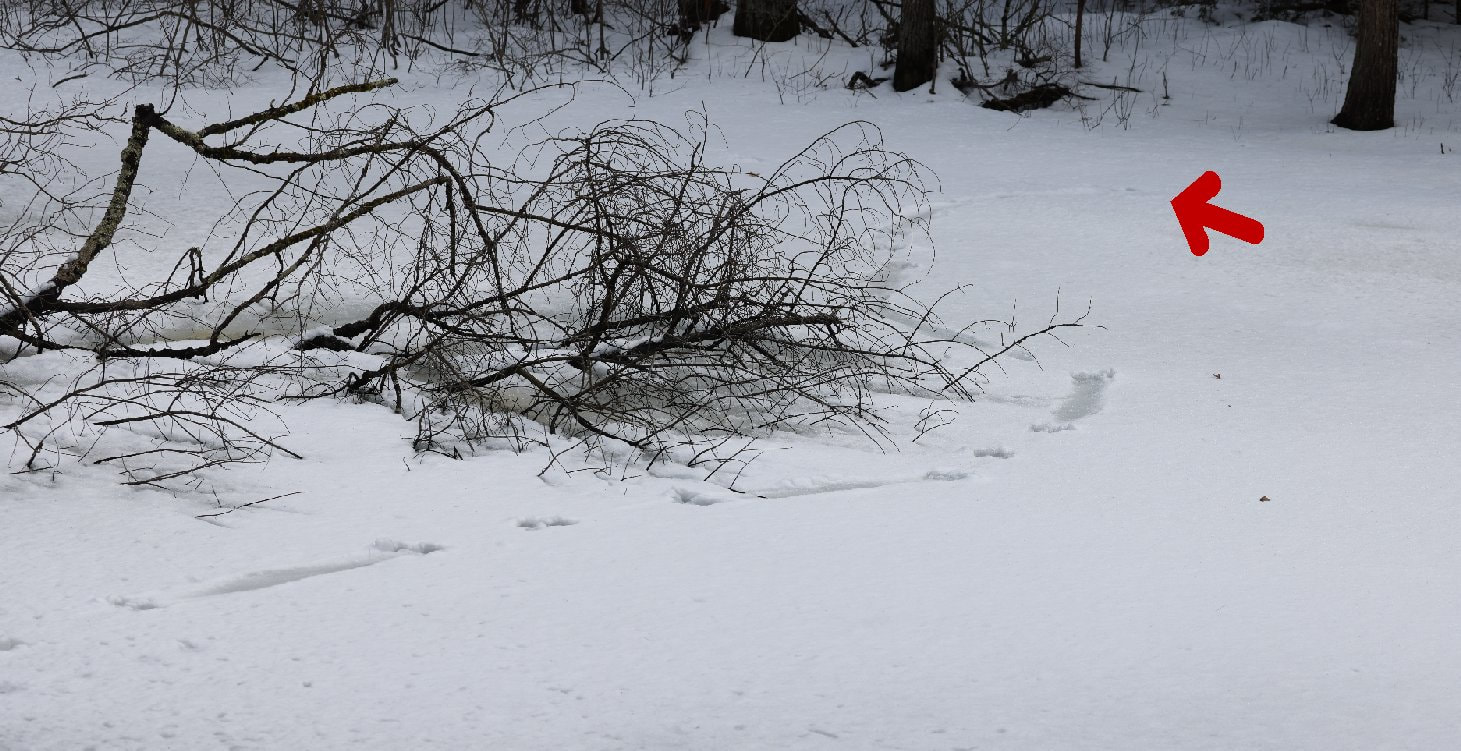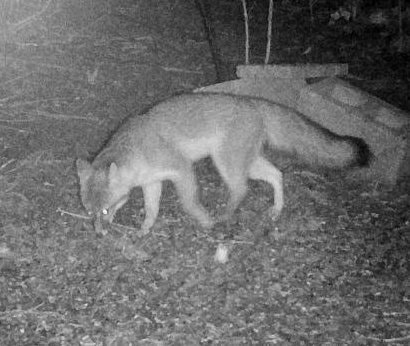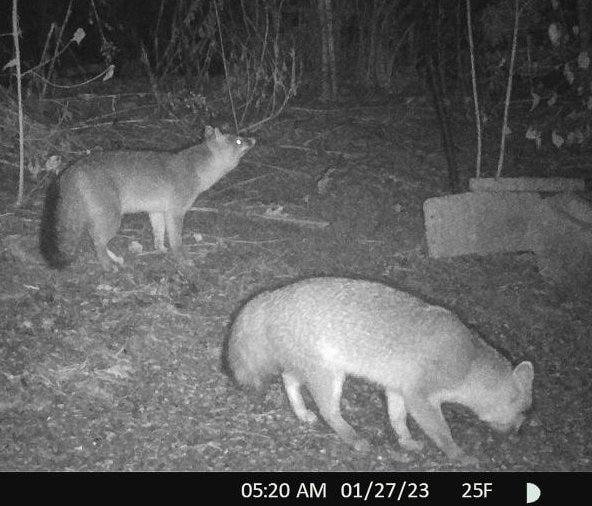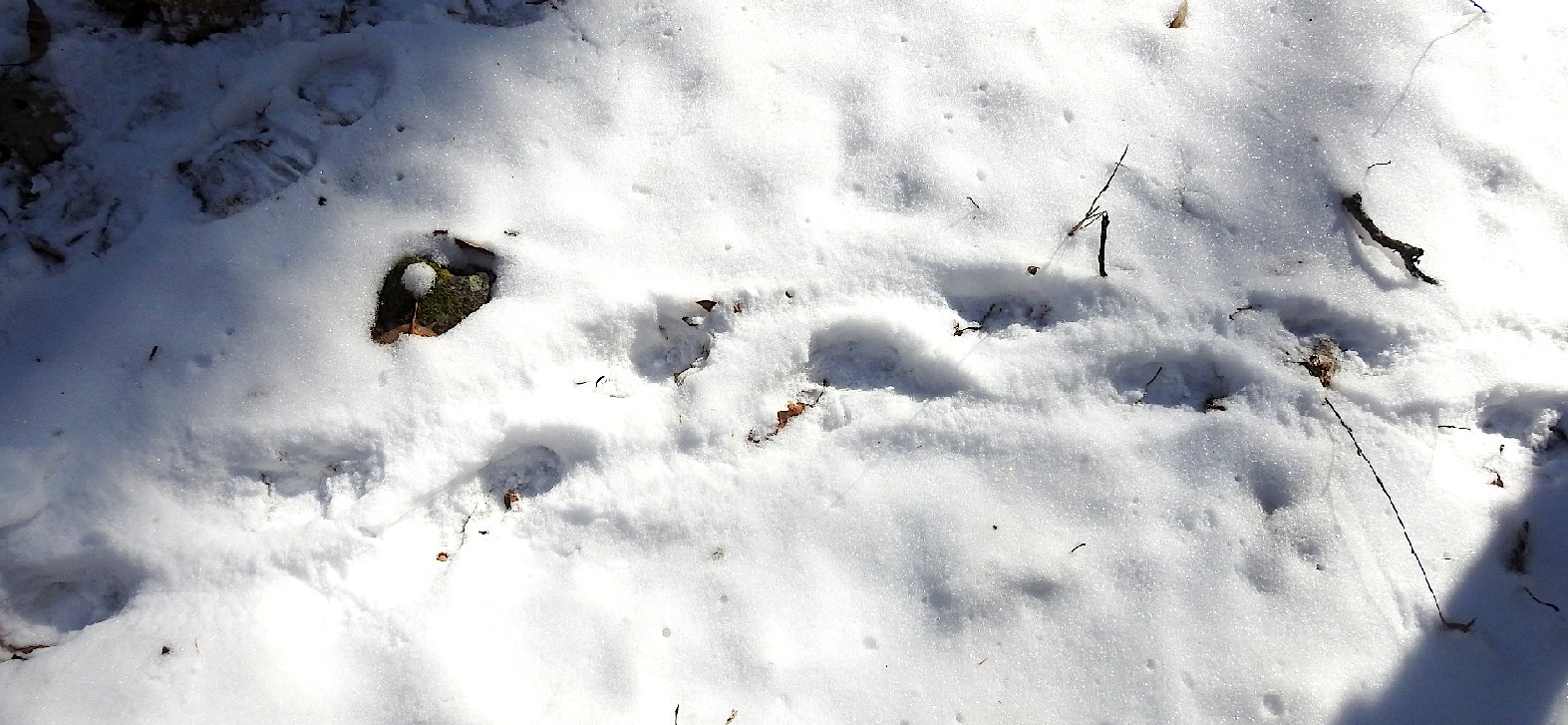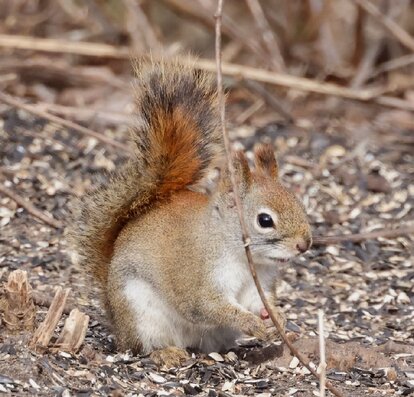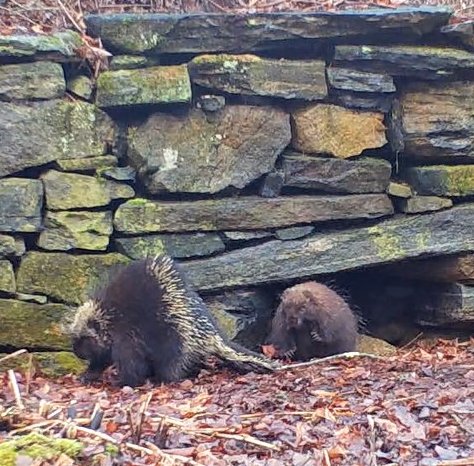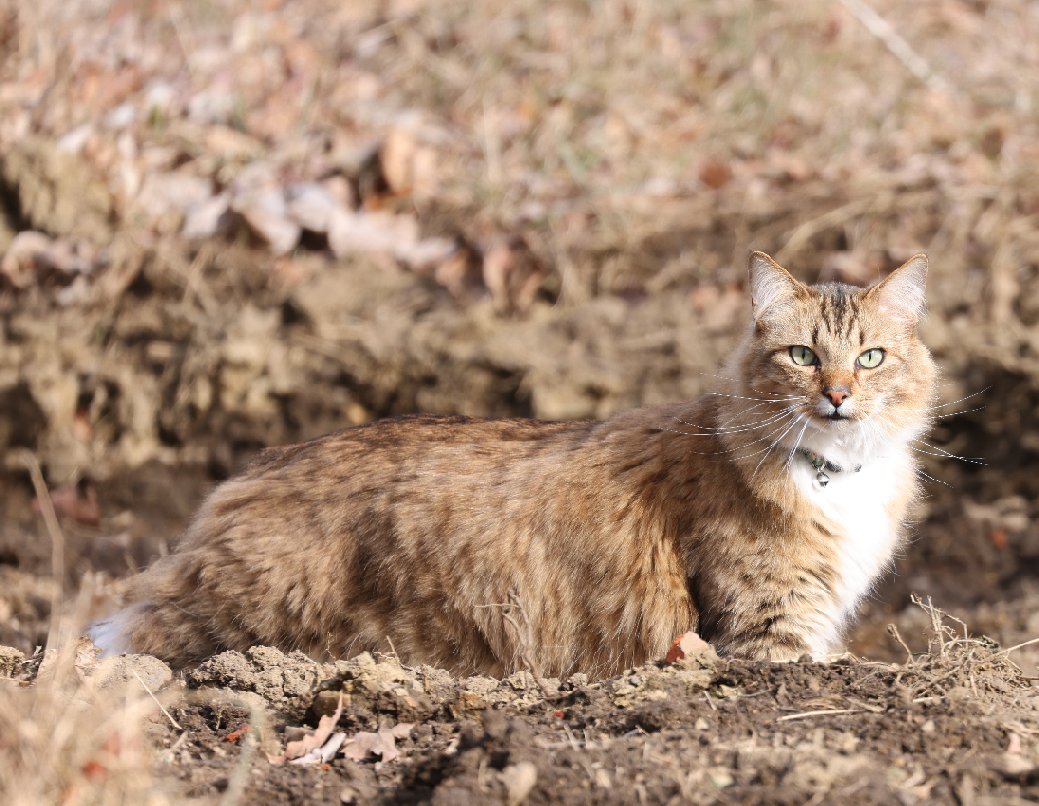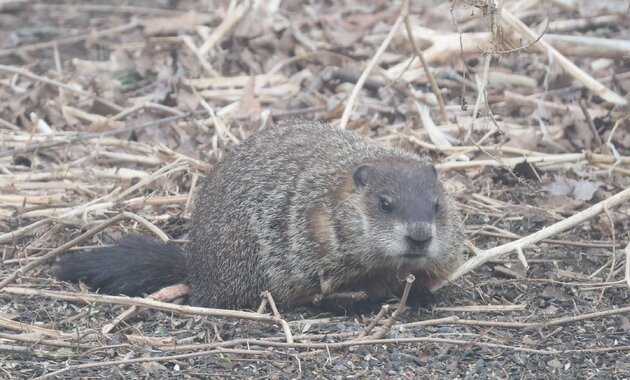Whether passing through backyards under cover of darkness, encountered while hiking, or captured by a well-placed trailcam, the mammals of central Massachusetts allowed some Club members
a glimpse into their winter lives.
a glimpse into their winter lives.
|
|
|

Another photogenic mammal crosses the path of one of Jim Morelly's trailcams. This bull moose has shed the antlers that are important in the mating season and is sporting pedicles (flat bony protrusions on the skull). He still retains a good-sized dewlap or bell under his chin. This flap of skin is larger in males.
|
|
|
Not a mammal we see in winter, the woodchuck, or groundhog, is one of the few species that enter into true hibernation. Instead its appearance signals the end of winter. Male groundhogs emerge from hibernation before females, anytime from early March to April, which is when the breeding season begins. Like this Hardwick animal, they emerge from hibernation with some remaining body fat to live on until the warmer spring weather produces abundant plant materials for food. Photo by Alan Rawle
|
